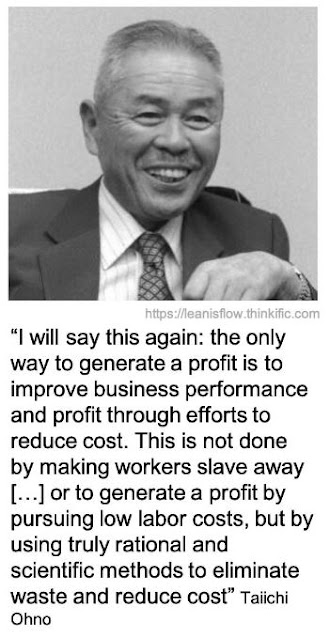A few weeks ago, this column ran a four-part series about whether the proliferation of international standards would undermine economic productivity, under the umbrella title of "Parasitic certifications?" (Part 1, Part 2, Part 3, and Part 4.) Related to this discussion was a question whether the implementation of formal quality standards drives the growth of bureaucracy.
The short answer is No. Bureaucracy is caused by the overall growth of the organization, and especially by centralization. It is possible to implement a quality system without adding much in the way of personnel, though admittedly you have to be a little clever about it.
To implement a quality system with minimal growth of personnel, you have to incorporate most of the basic quality functions into the daily work of the people doing the operative tasks. There will always be some irreducibly nonzero quantum of administrative work associated, and it is best to give this to someone dedicated to the task. But you don't need someone from Quality to sit in on design reviews, so long as the designers are doing them. You don't need someone from Quality carrying out inspections on the line, so long as you have institutionalized those inspections as part of regular practice. If people know what they have to do and why, you don't need a lot of extra bodies tasked with enforcement.
So what explains bureaucracy? I claim that there are two drivers: growth and centralization.
Growth is the first driver, because the more people there are in an organization, the more communication links there are: and the number of links grows as the square of the number of individuals. (In principle the number of links among n people = n(n-1)/2.)
Bureaucracy is just a tool for managing this communication by slowing it down and channeling it. If you think that bureaucracy makes everything slower and more difficult, well, yes, that's the point. In a large organization the alternative, where internal communication is completely free, would be chaos.

In other words, if you belong to a small team which is left alone to do your work in isolation, you can work as a small organization: lightly, quickly, and free of bureaucracy. When you are forced to integrate with a larger entity, that's when you get bureaucracy and your work slows down.
Why would you ever be forced to work more slowly, though?
The process that forces you to integrate with a larger entity is centralization, and there can be a lot of motives pushing centralization.
- Centralization is cheaper and more efficient than dispersal. If one Purchasing department and one Human Resources department can service five offices, why would you ever pay for five of each?
- Centralization is simpler than dispersal. It's always easier to deal with one supplier for a given commodity than to manage a dozen. And it's always easier to deal with a few large customers than a hundred small ones.
- At some level, centralization is simply inherent in the nature of organizations. (The sociologist Robert Michels worked on this topic.)
To be fair, centralization has its drawbacks, too.
- Centralization may be cheaper and simpler than dispersal, but it is a lot more fragile. If you have one Purchasing department supporting five offices and that one department loses power, or loses its Internet connection, or is shut down for a pandemic, you could be in a world of hurt. If each office has its own Purchasing agent, one of them can step in to pick up the extra buying, and business can continue.
- If your single-source supplier goes bust, you have to qualify a new one from scratch. If you have only twelve huge customers worldwide, there's a nontrivial chance that they might all postpone additional purchases during lean times and suddenly you have no income. That's less likely to happen if you have a hundred small customers.
- Small organizations are far less likely to suffer from employee disengagement, because everyone can see right away how they personally make a difference. In huge organizations it's a lot easier to put in your eight hours and go home, because the big picture is literally too big for you to see it at all.
So what's the answer? Should companies deliberately try to fail, so they can stay small?
Not quite. But there's a lot to be said for decentralization. Interestingly Amazon — which looks like a global behemoth in anybody's book — has taken some steps in this direction.One is the famous "two-pizza rule": if a team can't be fed with two pizzas, it's too big. This rule forces teams to be small and manageable.
Another is just as important: the API mandate. This rule seems to have grown out of Jeff Bezos's insistence that "Communication is terrible!" The idea is that every team in Amazon is required to communicate with other teams only through a single API and in no other way. Part of the point was to force Amazon to think in terms of service-oriented architecture. But for our current purposes another consequence was that this mandate reduced the amount of internal communication that was possible at Amazon, and forced it all into highly-predictable channels. That's what bureaucracy is supposed to do. In other words, by (1) forcing teams to be small, and by (2) choking off the (otherwise exponential) growth of communication links, Amazon eliminated the need for the kind of massive bureaucracy that a company of 1.6 million employees worldwide would normally require.
Maybe your company doesn't plan to imitate Amazon. But at least there are options.











